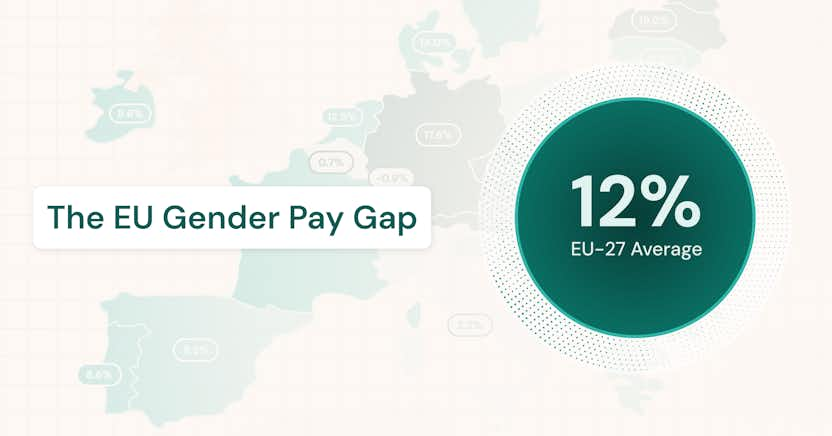Identifying and Fixing Pay Compression in Your Organization

Learn more about the following beqom products
Pay compression is an issue that has been arising with increasing frequency over the past several years, significantly impacting business operations and contributing to increased employee dissatisfaction. When pay compression occurs, employees may not feel fairly compensated or adequately recognized for their contributions, which risks them becoming disengaged in their roles or seeking employment elsewhere.
Companies must take accountability, work towards identifying the root causes of pay compression, and take the appropriate actions to address this issue. However, outdated HR processes that do not leverage technology or relevant data can further contribute to pay compression rather than fix it.
Aside from highlighting the causes and impacts of pay compression, this article outlines what steps must be taken by HR teams. Organizations that work toward reducing pay compression and providing equitable compensation for employees can increase retention rates, enhance productivity, and improve loyalty.
What is salary compression?
Salary compression, also known as wage or pay compression, is a issue that occurs when there is little difference in the payment of employees regardless of their varying experience, qualifications, and abilities.
A typical example of salary compression is when new recruits are offered compensation equal to or similar to long-term employees. In a highly competitive job market, companies may even experience salary inversion, which occurs when new recruits are paid more wages than existing employees in similar roles.
How to calculate salary compression
Calculating salary compression involves two key values: the current compensation for a specific position and the midpoint of the salary range set by the company for that role. The midpoint is found by adding the highest and lowest salaries offered for the position and dividing the sum by two.
Salary compression is then determined by dividing the current salary by this midpoint. Multiplying the result by 100 gives the percentage that indicates how the employee's pay compares to the average compensation for the position. This calculation helps identify areas needing adjustments to ensure fair compensation.
A brief salary compression example
Imagine the salary range for a graphic designer is set between $50,000 and $70,000, reflecting the market rate and internal tiers for various experience levels within this role. Let’s calculate the pay compression for this scenario.
Steps to calculate wage compression:
1. Determine the midpoint of the salary range: $50,000 to $70,000.
Midpoint calculation: (50,000+70,000)/2=60,000
The midpoint salary for the graphic designer role is thus $60,000.
2. Calculate salary compression:
Considering a $58,000 salary for a new graphic designer with a solid portfolio and two years of experience.
Compression calculation: (58,000/60,000)×100=96.67%
3. Interpretation:
A 96.67% calculation indicates the proposed salary is just 3.33% below the salary range midpoint, highlighting the position of this salary within the organizational structure. If current graphic designers with multiple years of experience in the job earn near the midpoint (e.g., $59,000-$61,000), a new hire at $58,000 might cause wage compression concerns by minimizing the difference in compensation between experience levels, potentially affecting staff morale.
Completing this calculation allows organizations to evaluate the fairness and competitiveness of salaries for new and existing employees. Such insights provide for making informed salary offer decisions, balancing new hires' experience and skills against the established salary structure. Thus, companies can take appropriate action to design and implement a balanced compensation strategy that aligns with market standards and the value employees bring.
What causes salary compression?
There are several contributing factors to salary compression, including:
Increase in minimum wage
When minimum wage increases throughout a state, new hires may be paid amounts similar to long-term employees. This can lead to a narrowing of the salary gap between inexperienced employees and their long-term counterparts.
Inconsistent pay practices
A lack of standardized procedures for determining salaries or providing raises within an organization can result in disparities among employees who hold similar positions or possess comparable skill sets. This inconsistency may result from subjective decision-making by managers, favoritism, or an overall lack of transparency in the compensation process.
Outdated data
When organizations rely on outdated or inaccurate information to make compensation decisions, they may inadvertently offer wages that do not reflect current market trends or industry standards. This can result in disparities between the salaries of new hires and existing employees, particularly if the market value for certain skills or jobs has increased over time.
Inflation
Rising inflation impacts the purchasing power of the dollar, subsequently reducing the value of employee compensation. The distinction between higher and lower-salaried employees will become compressed if an organization has not adjusted compensation rates to account for fluctuating inflation rates.
Demand for talent
There are still high numbers of job openings in the US and Europe. With the Great Resignation still having an impact, the demand for talent causes companies to pay more to fill the positions they need. For instance, workers who changed jobs between April 2021 and March 2022 saw an average pay increase of 9.7%. Shifts in the job market and the high demand for certain skill sets can lead to pay compression, as companies offer substantial salary increases to attract new talent while current employees see more modest raises.
Why is pay compression a problem?
Pay compression is critical for maintaining a balanced compensation structure in today's labor market. When entry-level or newly hired employees receive wages close to or exceeding those of more experienced team members, it can create friction and dissatisfaction.
This is especially prevalent in industries with low starting wages or when federal wage increases occur, prompting organizations to make swift pay adjustments. Over time, this can erode employee morale, as seasoned workers may feel undervalued.
Ensuring that wages across all levels remain fair and competitive is essential to fostering a positive work environment and avoiding the negative impacts of pay compression. Addressing this challenge with regular reviews and compensation adjustments can help retain skilled employees and support long-term organizational success.
The impacts of pay compression
Pay compression can cause undesirable implications for organizations, including:
Increased turnover
Long-standing employees may feel undervalued and unappreciated, which can push them to leave their company for a better opportunity.
Decreased employee engagement
Employees may realize that their pay does not reflect their performance, which could demotivate them and cause them to become more disengaged.
Reduced teamwork
Through feelings of unfairness, employees may develop hostility towards each other, negatively impacting collaborative efforts and reducing the productivity of team-based tasks.
Hindered brand reputation
Perceived unfair treatment of employees due to pay compression can quickly spread to leave a lasting impact on the organization’s reputation. As a result, potential business partners and customers may choose to seek alternatives.
Recruitment challenges
With a negative brand reputation due to pay compression, organizations will likely experience new challenges when attempting to expand their workforce or replace employees.
Legal consequences
Although pay compression is not illegal in itself, paying a higher salary to one employee compared to another when both have similar roles could create grounds for a discrimination lawsuit.
How to prevent and address pay compression
Many organizations face challenges associated with salary compression, and this issue is predicted to continue, causing strain on both employees and employers, as indicated by key compensation trends. However, organizations can work towards correcting pay compression and ensuring fair compensation practices for all employees through strategies divided into distinctive stages.
Considering market conditions
Remaining updated with salary trends and competitor compensation levels, organizations can adjust their compensation strategies to align with industry standards and expectations. By establishing this proactive approach, organizations can mitigate the risk of pay compression and further prevent future challenges related to employee compensation.
Conducting regular salary audits
As organizations review their employee’s compensation across varying departments, they can identify discrepancies and instances of pay compression or pay inequity. HR teams will review salary data through this process and consider vital factors such as job roles, performance, and employee experience to determine the appropriate course of action.
Resolving pay inequities
After a salary audit, HR can leverage the audit’s findings to implement corrective measures, ensuring fair compensation for all employees. Pay equity software can help aid this process by identifying root causes of inequity, calculating pay gaps, and establishing optimal remediation strategies. This will also assist in planning salaries that are fair, competitive, and within budget.
Controlling overtime
Excessive overtime can contribute to pay compression as it allows hourly workers to out-earn any salaried employees who are not compensated for overtime hours. Organizations can reduce this possibility by limiting how much overtime each employee can work and implementing strategies to effectively control overtime permissions. There may also be a need to evaluate and adjust staffing levels and workload distribution to minimize the need for overtime, particularly during busy periods.
New policies should also be clearly communicated to employees and regularly reviewed to gain insight into their effectiveness.
Providing non-financial rewards
In addition to effective bonus plans, organizations can retain employees through non-financial rewards, keeping them engaged and satisfied in their roles. This can reduce the negative impact of pay compression, as employees will still feel appreciated and compensated for their efforts despite pay disparities.
- Flexible working arrangements - Flexible working hours and opportunities for remote work allow employees to maintain a better work-life balance, significantly increasing their job satisfaction.
- Professional development opportunities - When companies invest in the professional growth of their employees, they can raise loyalty and promote feelings of support among their workforce.
- Workplace wellness initiatives - Wellness programs and initiatives such as gym memberships, stress management education, and mental health services can boost morale and reduce the possibility of burnout.
- Additional perks - Discounts for the company’s products and services enable employees to stretch their salaries and reduce financial strain. This also improves the perceived value of employee compensation packages and promotes brand loyalty.
- Recognition programs - Flexible recognition programs will provide attractive and tailored rewards for employees, increasing their motivation and engagement, even in the presence of pay compression.
Utilize progressive practices to tackle pay compression
Through careful planning and informed decisions, organizations can take steps toward minimizing pay compression. Although, in some cases, pay compression cannot be completely prevented, taking the appropriate actions can reduce the negative impacts of this issue, increasing employee satisfaction and promoting a positive workplace culture.
By using workforce analytics and compensation management software, organizations can integrate effective strategies based on data-driven decisions to correct pay compression. With the help of these tools, organizations will demonstrate their commitment to pay equity and fairness in compensation, allowing employees to feel valued and appreciated, further enhancing their morale, productivity, and overall performance.
FAQs about pay compression
Learn more about pay compression with these answers to common questions:
What does compression mean in salary?
Compression in salary means that within an organization, newly hired employees receive similar pay to long-term employees. Salary compression can also mean that the differences in salaries between varying employees do not accurately reflect their skills, roles, or responsibilities.
Is salary compression illegal?
Salary compression is not illegal in itself, but it can pose legal challenges. Employees may sue for discrimination if they believe that salary compression is a result of discriminatory practices.
How do you overcome salary compression?
Organizations can overcome salary compression by first identifying problem areas through a comprehensive audit. With findings from the audits, HR can work towards rectifying pay inequities with the help of pay equity tools and software. Limiting employee overtime and providing non-financial rewards such as flexible working arrangements and employee recognition programs can also help organizations manage pay compression.
What is the difference between salary compression and salary inversion?
Salary compression and salary inversion are both issues related to discrepancies in pay, but they occur in different contexts and affect employees differently. While salary compression occurs when there is a minimal pay gap between employees at varying levels of experience and skills, salary inversion arises when new hires receive higher salaries than long-term employees.
Contact us at beqom to learn how a dedicated compensation platform can empower you to address pay compression in your organization.







